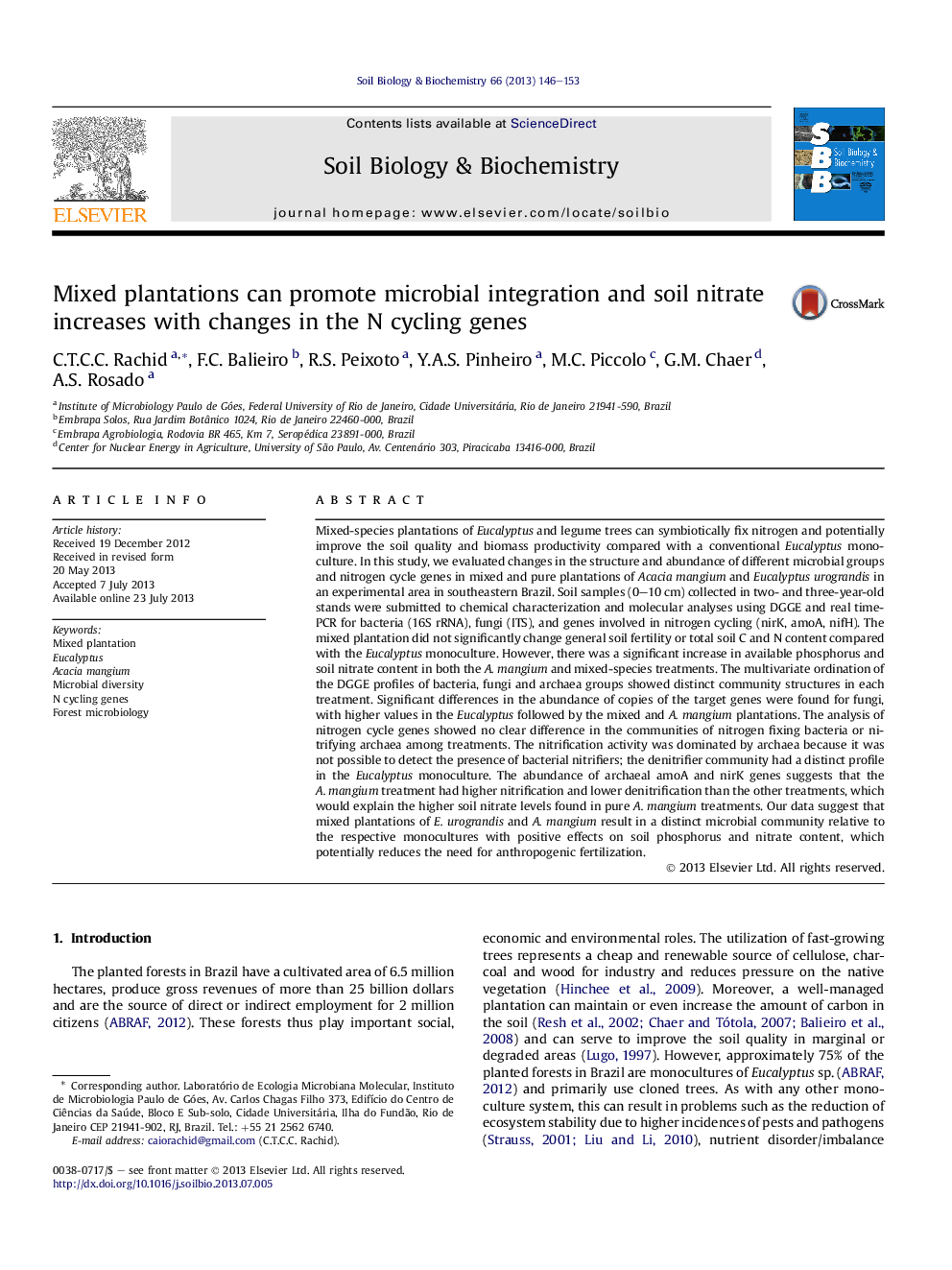| کد مقاله | کد نشریه | سال انتشار | مقاله انگلیسی | نسخه تمام متن |
|---|---|---|---|---|
| 2024691 | 1542618 | 2013 | 8 صفحه PDF | دانلود رایگان |

• We studied soil fertility and microbiology in an Acacia–Eucalyptus mixed plantation.
• The monocultures and the mixed plantation increased soil C and N over time.
• Acacia and mixed plantation showed higher soil nitrate and phosphorus than Eucalyptus.
• Bacteria, fungi and Archaea community had structure altered by management practices.
• Nitrate accumulation may resulted from nitrifiers increase and denitrifiers decrease.
Mixed-species plantations of Eucalyptus and legume trees can symbiotically fix nitrogen and potentially improve the soil quality and biomass productivity compared with a conventional Eucalyptus monoculture. In this study, we evaluated changes in the structure and abundance of different microbial groups and nitrogen cycle genes in mixed and pure plantations of Acacia mangium and Eucalyptus urograndis in an experimental area in southeastern Brazil. Soil samples (0–10 cm) collected in two- and three-year-old stands were submitted to chemical characterization and molecular analyses using DGGE and real time-PCR for bacteria (16S rRNA), fungi (ITS), and genes involved in nitrogen cycling (nirK, amoA, nifH). The mixed plantation did not significantly change general soil fertility or total soil C and N content compared with the Eucalyptus monoculture. However, there was a significant increase in available phosphorus and soil nitrate content in both the A. mangium and mixed-species treatments. The multivariate ordination of the DGGE profiles of bacteria, fungi and archaea groups showed distinct community structures in each treatment. Significant differences in the abundance of copies of the target genes were found for fungi, with higher values in the Eucalyptus followed by the mixed and A. mangium plantations. The analysis of nitrogen cycle genes showed no clear difference in the communities of nitrogen fixing bacteria or nitrifying archaea among treatments. The nitrification activity was dominated by archaea because it was not possible to detect the presence of bacterial nitrifiers; the denitrifier community had a distinct profile in the Eucalyptus monoculture. The abundance of archaeal amoA and nirK genes suggests that the A. mangium treatment had higher nitrification and lower denitrification than the other treatments, which would explain the higher soil nitrate levels found in pure A. mangium treatments. Our data suggest that mixed plantations of E. urograndis and A. mangium result in a distinct microbial community relative to the respective monocultures with positive effects on soil phosphorus and nitrate content, which potentially reduces the need for anthropogenic fertilization.
Journal: Soil Biology and Biochemistry - Volume 66, November 2013, Pages 146–153